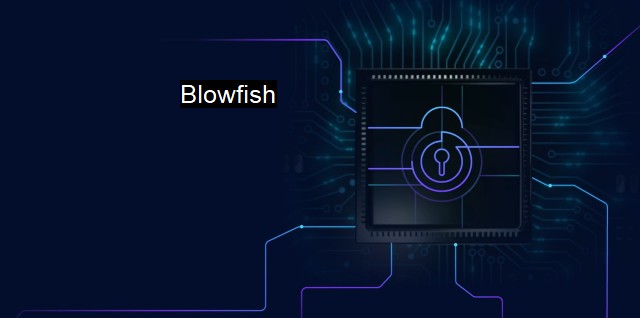What is Blowfish?
The Power and Simplicity of Blowfish: Bruce Schneier's Signature Cybersecurity Encryption Algorithm Explained
Blowfish is a symmetric key cryptographic algorithm, designed in 1993 by Bruce Schneier. It is widely used in the cybersecurity and antivirus landscape to ensure the protection and integrity of sensitive data. The name 'Blowfish' may sound unique and somewhat whacky but make no mistake, it carries a commendable reputation when it comes to securing data while transmitting or storing.Blowfish's architecture consists of 16 rounds of encryptions, utilizing Feistel networks, a design that allows hacking to become impractically complex. With a block size of 64 bits and a variable key length ranging from 32 bits to 448 bits, Blowfish empowers a high level of customization. More significantly, it is not subject to any patents and is freely available for commercial or non-commercial use, making it an attractive choice for many companies and individuals.
The effectiveness of the Blowfish algorithm primarily hinges on simple operations such as addition, XOR operation, and array data translations. These functions form the basis of how Blowfish achieves data encryption. Being simplistic in nature, they are directly linked to the rapid speed at which the Blowfish algorithm operates, making it one of the most efficient encryption algorithms.
Blowfish splits the data that needs to be encrypted into 64-bit blocks. Each block undergoes 16 rounds of complicated cryptographic algorithms along with the user’s secret key before converting into encrypted data. The 16 rounds ensure a high level of data security, assimilating a close-to-impenetrable wall of security.
In the antivirus or cybersecurity context, Blowfish comes into play mainly in the storage or transmission of sensitive data. Let's take an antivirus software suite; it must send potentially sensitive data to the host company, such as a behavior profile of a suspicious file. Using Blowfish, the software can locally encrypt this data safely before transmission. This encryption protects the data during transmission, even if someone manages to gain access to the transmitted data, they will see nothing more than unreadable strings of characters without the relevant decryption key.
It is not uncommon for antivirus software to employ Blowfish when storing sensitive data within the user’s system. If malicious software bypasses the system's defenses and accesses the stored data, it will encounter standalone, unreadable characters that require a specific key for decryption, which most likely will be unreachable to the invader.
Despite the validity and the widespread use of Blowfish, it is pertinent to mention that it has been succeeded by Twofish, a similar symmetric key block cipher, yet comparatively more secure and efficient. It was also designed by Bruce Schneier and is considered superior software in many respects. Twofish contains advanced features that were inspired by Blowfish's performance and subsequently improved, considering the increasing sophistication of modern cybersecurity threats.
Cybersecurity systems are not just about safeguarding from threats but also leaving room for scrutinizing and understanding them. To make the practice a machinery process, Blowfish steps in to encrypt log data. By allowing log encryption, it ensures the investigation retains its integrity and the potentially sensitive information stays protected.
Blowfish, within the cybersecurity and antivirus context, serves as a critical piece of the comprehensive security puzzle. Though superseded by Twofish, its impactful contribution in shaping the landscape of encryption technologies in cybersecurity can never be undermined. From the secure transfer of data to the encryption of sensitive stored information, Blowfish has firmly secured its place in the legacy of data and information encryption.

Blowfish FAQs
What is Blowfish in cybersecurity?
Blowfish is a symmetric-key block cipher that is commonly used in modern cybersecurity applications. It is designed to encrypt and decrypt data in a way that is secure and efficient.Is Blowfish still a secure encryption method?
Yes, Blowfish is still considered secure and is widely used in various cybersecurity applications, including antivirus software. However, it has been replaced by newer encryption algorithms such as AES in many recent applications.Is Blowfish used in antivirus software?
Yes, Blowfish encryption is commonly used in antivirus software to protect user data and prevent malicious attacks. It is used to encrypt virus definitions and other sensitive data stored in the antivirus software.How does Blowfish encryption work in antivirus software?
Blowfish encryption in antivirus software works by generating a unique key that is used to encrypt and decrypt data. This key is then used to encrypt the virus definitions and other sensitive data used in the software. The encrypted data is then stored securely and can only be accessed using the correct key.| | A | | | B | | | C | | | D | | | E | | | F | | | G | | | H | | | I | | | J | | | K | | | L | | | M | |
| | N | | | O | | | P | | | Q | | | R | | | S | | | T | | | U | | | V | | | W | | | X | | | Y | | | Z | |
| | 1 | | | 2 | | | 3 | | | 4 | | | 7 | | | 8 | | |||||||